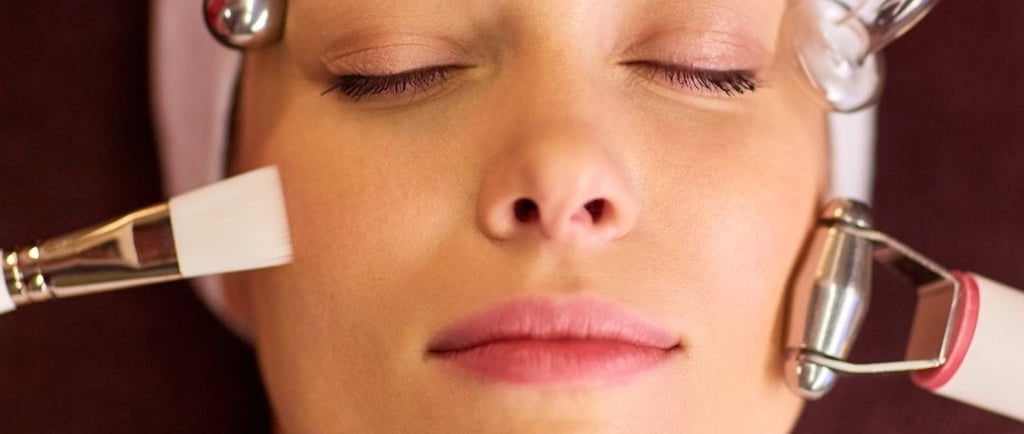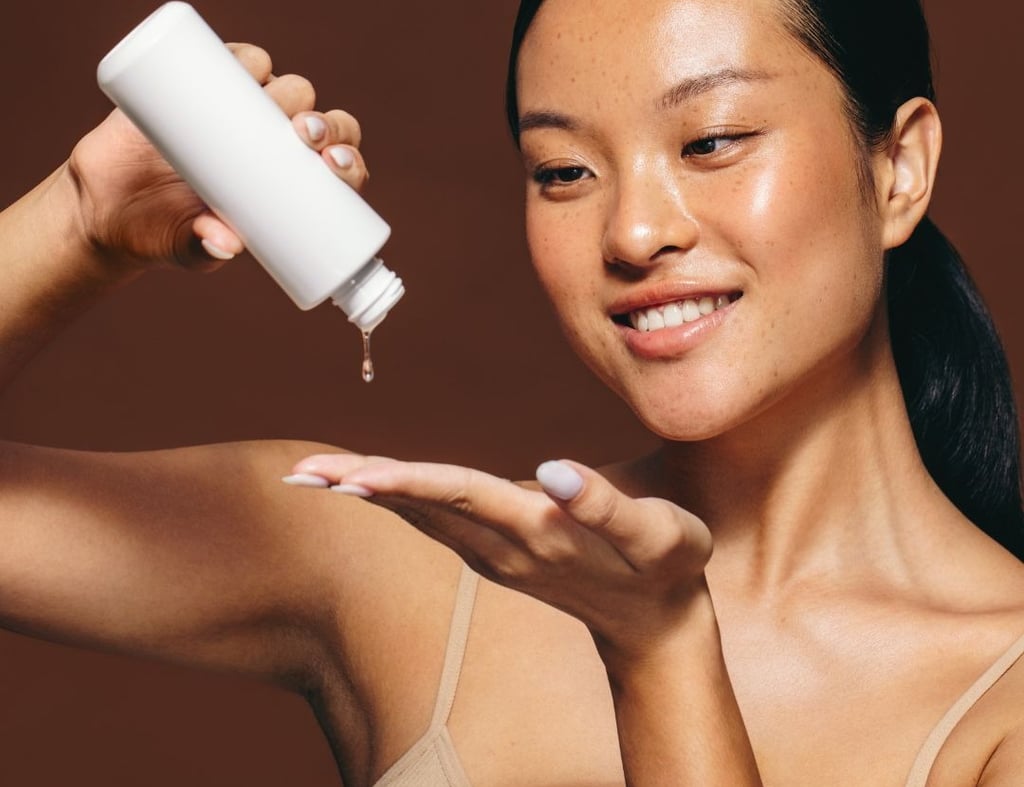How to Build a Skincare Routine That Complements Your Facial Treatments
Facial treatments are an essential part of a well-rounded skincare routine, offering deep cleansing, hydration, and targeted treatments to address specific skin concerns. However, to maintain and enhance the results of a facial, it’s crucial to follow up with an effective daily skincare routine that complements the treatments you’ve received. The right skincare routine helps to nourish your skin, prolong the benefits of your facial, and prevent common issues like dryness, irritation, or breakouts. Here’s a step-by-step guide to building a skincare routine that works in harmony with your facial treatments:
3/6/20254 min read


Facial treatments are an essential part of a well-rounded skincare routine, offering deep cleansing, hydration, and targeted treatments to address specific skin concerns. However, to maintain and enhance the results of a facial, it’s crucial to follow up with an effective daily skincare routine that complements the treatments you’ve received. The right skincare routine helps to nourish your skin, prolong the benefits of your facial, and prevent common issues like dryness, irritation, or breakouts. Here’s a step-by-step guide to building a skincare routine that works in harmony with your facial treatments:
1. Start with a Gentle Cleanser
After a facial, your skin is often in a delicate state. Whether your skin has been exfoliated or treated with powerful ingredients, it’s important to use a gentle cleanser that will not strip the skin’s natural barrier. Choose a non-irritating, sulfate-free cleanser that removes dirt, excess oil, and makeup without disrupting the skin’s moisture levels.
Why it works: Gentle cleansers keep the skin’s protective barrier intact and prevent unnecessary irritation.
Recommended Products: Hydrating or soothing cleansers with ingredients like glycerin, ceramides, or aloe vera are ideal.
2. Apply a Hydrating Toner
After cleansing, it’s beneficial to use a hydrating toner to balance the skin’s pH and prepare it for the next steps in your skincare routine. A good toner helps lock in moisture and can further soothe the skin after a facial.
Why it works: Toners with hydrating or calming properties help restore moisture and ensure your skin is ready to absorb the active ingredients in your next products.
Recommended Ingredients: Look for toners with hyaluronic acid, rose water, chamomile, or witch hazel to hydrate, calm, and refresh your skin.
3. Use a Targeted Serum for Skin Concerns
Facial treatments often focus on specific skin concerns, such as acne, hyperpigmentation, or fine lines. To continue addressing these issues, incorporate a serum tailored to your skin’s needs. Choose serums with active ingredients that target specific skin concerns like vitamin C for brightening, niacinamide for soothing, or retinol for anti-aging.
Why it works: Serums deliver concentrated active ingredients deeper into the skin, providing ongoing treatment to enhance the benefits of your facial.
Recommended Ingredients:
Vitamin C: Brightens the complexion and boosts collagen production.
Niacinamide: Reduces redness, pores, and uneven skin tone.
Retinol: Encourages cell turnover and helps with anti-aging concerns.
Salicylic Acid: Excellent for acne-prone skin.
4. Moisturize, Moisturize, Moisturize
Hydration is key to maintaining healthy skin, especially after a facial. A good moisturizer will lock in moisture, support the skin’s barrier function, and help retain the benefits of your facial treatment.
Why it works: Moisturizing regularly replenishes hydration and helps prevent dryness, flakiness, and irritation after treatments. It also helps to seal in the serums and active ingredients from earlier in the routine.
Recommended Ingredients: Opt for moisturizers with hydrating ingredients like hyaluronic acid, ceramides, or glycerin to provide long-lasting moisture without clogging pores.


5. Don't Forget Sunscreen
Sunscreen is an absolute must in any skincare routine, especially after facial treatments that may leave your skin more sensitive to sunlight. Protecting your skin from UV rays prevents damage such as pigmentation, premature aging, and even skin cancer.
Why it works: Sunscreen shields your skin from harmful UV rays, preventing further damage, irritation, and the reversal of the results from your facial.
Recommended Products: Look for a broad-spectrum SPF of at least 30, preferably one that is non-comedogenic and suitable for your skin type. Mineral sunscreens with zinc oxide or titanium dioxide are great options for sensitive skin.
6. Incorporate Weekly Treatments for Maintenance
In addition to your daily routine, you can integrate weekly treatments to complement your facial. Depending on your skin needs, you might choose exfoliating masks, hydrating masks, or targeted treatments for acne or aging concerns.
Why it works: Weekly treatments provide deeper benefits, ensuring that your skin stays on track and continues to improve. They also help to keep skin healthy and glowing between professional treatments.
Recommended Treatments:
Exfoliating Masks: For smooth skin and preventing clogged pores, use a gentle exfoliating mask (with AHAs or BHAs) once or twice a week.
Hydrating Masks: For dry or sensitive skin, use a hydrating sheet mask or overnight mask weekly to keep your skin plump and nourished.
Clay Masks: For oily or acne-prone skin, a clay mask can help absorb excess oil and impurities.
7. Adjust Based on Your Skin’s Needs
Your skin may react differently to products depending on how recently you’ve had a facial treatment. After a facial, it may be more sensitive, so it’s essential to listen to your skin and adjust your routine accordingly. If you experience irritation or excessive dryness, scale back on stronger ingredients or products with high concentrations of active ingredients. If you notice that your skin feels oily, you may want to switch to a more lightweight moisturizer or adjust the frequency of your treatments.
Why it works: Your skin’s needs can vary day by day, and adjusting your routine based on its reactions will ensure that your skin remains healthy and well-balanced.
Tip: If you’ve had a chemical peel, microneedling, or other intense treatments, wait at least 24-48 hours before applying strong actives like retinol, exfoliating acids, or vitamin C to avoid irritation.
8. Stay Consistent
The key to seeing results from both your facial treatments and your skincare routine is consistency. Stick to your routine, even on days when your skin seems to be doing well, to maintain the benefits of your facials and continue improving your skin’s health.
Why it works: Consistency is key to long-term results. Skincare is a marathon, not a sprint, and maintaining a consistent routine allows your skin to continue benefiting from your facial treatments over time.
Conclusion
Building a skincare routine that complements your facial treatments is essential for maximizing the benefits of both. By following a simple yet effective routine that includes cleansing, toning, treating, moisturizing, and protecting your skin, you can maintain healthy, glowing skin and extend the results of your facials. Remember, skincare is highly personalized, so listen to your skin and adjust products and routines based on its needs. Regular commitment to a well-rounded skincare regimen will keep your skin looking its best long after your facial treatments.
Facial Bangkok
Discover top-notch treatments for ultimate facial rejuvenation in Bangkok - Thailand.
Guide
© 2024. All rights reserved. Designed by Pimclick SEO Agency
Article
